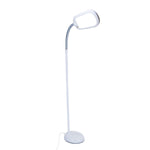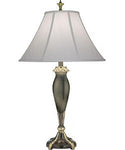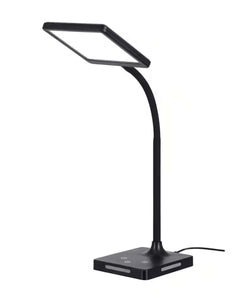
Lamp Shades: When to replace a lamp shade
Search
See also our main lamp shade article for more lamp shade topics.
How and When to Replace a Lampshade
A well-chosen lampshade can transform the look of a room, bringing warmth, ambiance, and style to your space. However, like most household items, lampshades have a lifespan.
Over time, your shades may begin to show signs of wear and tear, which could affect the quality of light they give off and even the overall appearance of your lamp.
Knowing when and how to replace a lampshade can ensure that your lighting setup always looks fresh and well-maintained.
Types of Lampshade Materials

Lampshades come in various materials, each with unique characteristics and benefits. Choosing the right one can make all the difference in how your lamp complements your room.
Fabric Lampshades
- Materials: Cotton, linen, silk, and polyester are the most common fabrics.
- Pros: These shades diffuse light softly, creating a warm glow perfect for cozy spaces. They’re versatile and available in many colors, patterns, and shapes.
- Cons: They can attract dust and stains and may fade or yellow over time, especially if exposed to sunlight or heat.
Paper Lampshades
- Materials: Rice paper, parchment, and treated paper.
- Pros: Lightweight, affordable, and often used in minimalist and Asian-inspired designs. They provide soft, ambient lighting.
- Cons: Paper shades are delicate and more susceptible to tears, stains, and fading.
Plastic Lampshades
- Materials: Acrylic, PVC, or vinyl.
- Pros: Plastic shades are durable, inexpensive, and easy to clean. They’re available in many colors and finishes, making them popular for children's rooms and outdoor lamps.
- Cons: Plastic can discolor, warp, or crack with exposure to high heat over time.
Metal Lampshades
- Materials: Aluminum, brass, steel, and copper.
- Pros: These shades are durable, sturdy, and offer a sleek, modern look. Metal shades are ideal for focused lighting in industrial, contemporary, or minimalist spaces.
- Cons: They’re heavier than other options and may get hot if used with strong bulbs. Metal shades can also dent or scratch if not handled carefully.
Glass Lampshades
- Materials: Clear, frosted, stained, or opal glass.
- Pros: Glass shades add elegance and sophistication to a room. They’re easy to clean and allow for both diffused and focused light.
- Cons: Glass shades are fragile and can break or chip. They’re often more expensive and require careful handling.
Parts of a Lampshade

Understanding the basic parts of a lampshade can make replacement easier:
- Shade Frame: The metal skeleton that gives the shade its shape. It can be cylindrical, conical, drum-shaped, or square.
-
Fitter: This is the part of the shade that attaches to the lamp base. The most common types include:
- Spider Fitter: Attaches at the top of the shade and requires a harp.
- Clip-On Fitter: Clips directly onto the bulb, suitable for smaller lamps and chandeliers.
- Uno Fitter: Sits on top of the lamp socket and is held in place by the bulb.
- Harp: A metal frame that supports the lampshade above the light bulb and attaches to the spider fitter.
- Finial: A decorative knob that screws onto the top of the harp, securing the shade in place.
Signs That it's Time to Replace a Lampshade
Lampshades are designed to last, but they don’t last forever. Here are some signs that it might be time to replace your lampshade:
-
Yellowing or Fading
If your lampshade is fabric or paper, it may yellow or fade over time, especially if it’s exposed to direct sunlight. Yellowing can give your shade an old, worn-out look. -
Stains or Discoloration
Dust, smoke, and other environmental factors can cause discoloration and stains. If cleaning doesn’t remove these marks, it’s probably time to consider a new shade. -
Tears or Holes
Paper and fabric shades are prone to tearing. Even small rips can allow too much light to pass through, creating uneven illumination. -
Cracks in Plastic or Glass
If your plastic or glass shade has cracks, it’s best to replace it immediately. Cracks in plastic can spread, while glass shades with chips or cracks can pose a safety risk. -
Warping or Deformation
Lampshades made of plastic or certain types of fabric can warp over time due to prolonged exposure to heat from the light bulb. A warped shade may look lopsided and distort the light. -
Style Update
Sometimes, you may want to replace your lampshade to give your room a fresh, updated look. Changing the style, color, or shape of a shade can make a noticeable difference in the room’s ambiance.
Costs of Replacing a Lampshade

The cost of a new lampshade depends on the material, size, and design:
- Budget Shades: Simple paper or fabric shades typically start at around $10 to $20.
- Mid-Range Shades: Plastic, higher-quality fabric, and some metal shades can cost between $30 and $60.
- High-End Shades: Designer or custom-made shades, including those made of silk, glass, or premium metals, can cost $80 and up, sometimes reaching several hundred dollars.
When budgeting, also consider additional costs like the harp or finial if these parts also need to be replaced.
How to Choose the Right Replacement Lampshade

Selecting a replacement shade can be a fun process. Here are some tips to keep in mind:
-
Measure Your Old Shade
Measure the top and bottom diameter and slant height of your current shade to ensure the new one is a good fit. A shade that’s too big or small can make your lamp look awkward. -
Match the Fitter
Make sure the fitter type on the new shade matches your lamp. For instance, a shade with a spider fitter will require a harp, while clip-on shades work best for small, exposed bulbs. -
Consider the Room’s Style
Choose a shade color and material that complement your room’s decor. For example, a fabric shade works well in a cozy living room, while a metal or glass shade might be ideal for a contemporary kitchen. -
Light and Brightness
The material and color of the shade will influence the light output. For a bright room, consider lighter-colored shades or translucent materials. Darker shades will create a moody, subdued ambiance.
Benefits of Replacing a Lampshade
Replacing a lampshade might seem minor, but it can make a big difference in your space. Here are some benefits:
-
Enhanced Lighting
A fresh shade can improve the quality of light in the room, making it brighter, warmer, or more focused, depending on your preference. -
Improved Aesthetic Appeal
A new shade can give an old lamp a fresh look, updating the style of a room instantly. You can also use lampshades as subtle accents to tie together a color scheme. -
Personalized Style
With so many styles available, a replacement shade lets you express your taste. Whether you want a minimalist, vintage, or eclectic look, there’s a shade to match. -
Improved Durability
If your old shade was showing signs of wear and tear, a replacement will not only look better but also last longer. -
Energy Efficiency
Some materials and colors may help reflect light better, reducing the need for stronger (and more energy-consuming) bulbs.
Tips for Maintaining Your Lampshade

To prolong the life of your new lampshade, follow these simple maintenance tips:
-
Dust Regularly
Dust can accumulate quickly, especially on fabric shades. Use a lint roller or a vacuum with a brush attachment to remove dust. -
Avoid Direct Sunlight
Exposure to direct sunlight can fade and weaken certain materials. Place lamps in shaded spots or use UV-protective films on windows. -
Choose the Right Bulb
High-wattage bulbs can cause some materials to discolor or warp over time. Check the maximum wattage rating on your shade, and choose an LED bulb, which emits less heat than traditional bulbs. -
Spot Clean Carefully
For fabric shades, spot clean with a damp cloth and mild soap. Avoid getting the shade too wet, as this could weaken the material.
Freshen up your lamp
Replacing a lampshade can be a simple way to refresh your room’s look, improve your lighting, and ensure safety. With a wide range of materials and styles available, it’s easy to find the perfect shade that matches your decor and lighting needs.
Just remember to keep an eye on signs of wear and tear, and enjoy the transformation that a new lampshade can bring to your home or business.
Continue reading about lamp shades
Using lamp shades with light fixtures
How to attach a lamp shade to a lamp
How to measure lamp shades for a perfect fit
Matching a lamp shade to your lamp base
Lamp shade materials colors textures and patterns
Light bulb heat and lamp electrical safety tips
How to clean and repair lamp shades
How to create a custom DIY lamp shade
Explore Topics

Table of Contents
Lamp Shades: When to replace a lamp shadeHow and When to Replace a LampshadeTypes of Lampshade MaterialsParts of a LampshadeSigns That it's Time to Replace a LampshadeCosts of Replacing a LampshadeHow to Choose the Right Replacement LampshadeBenefits of Replacing a LampshadeTips for Maintaining Your LampshadeFreshen up your lampContinue reading about lamp shadesCommentsShopping Ideas
Trending





























































Comments